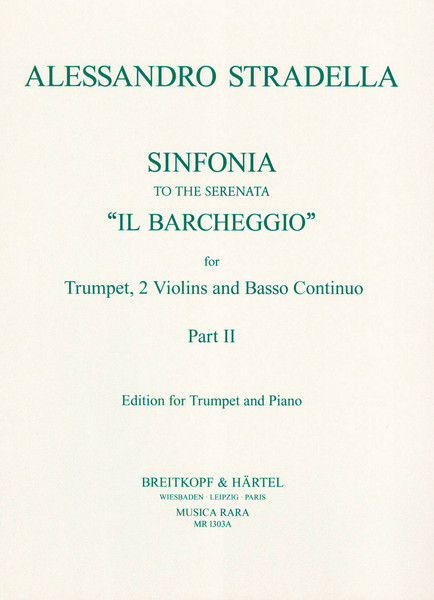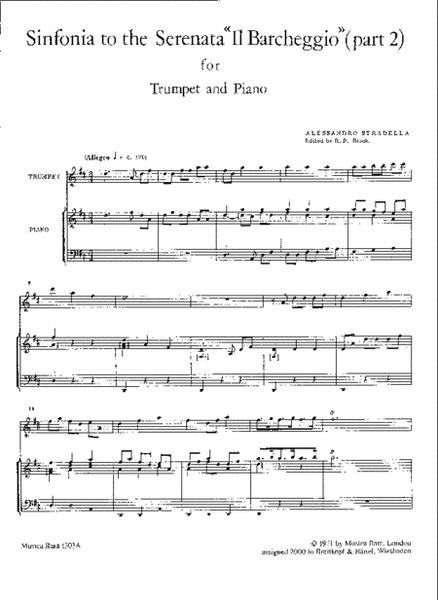Symphony to the Serenata "Il Barcheggio" Part II
piano reduction
Details
Description
SKU: BR.MR-1303A
Piano reduction. Composed by Alessandro Stradella. Edited by Robert Paul Block. Symphony. Musica Rara. Renaissance/early Baroque. Piano reduction. Breitkopf and Haertel #MR 1303a. Published by Breitkopf and Haertel (BR.MR-1303A).ISBN 9790004488249. 9 x 12 inches.
In his own time, Stradella was famed as a violinist, singer, composer and lover; and while the facts of his musical activities have come down to us undistorted, for the most part, by the passage of time, his activities as a rogue and lover have caused the growth of a legend that obscures the details of his life, while covering them over with a layer of fantasy that has been scraped away only in recent decades. Furthermore, Stradella's great reputation as a musician, combined with the stories invented about him, made him fair game for publishers of forgeries, who put forth great numbers of compositions under his name that were not his at all. Thus the musicologist has this further difficulty to contend with, and, again, the problems of authorship are still in the process of being solved. We can say with certainty, about his life, that he was born in Montefestino around 1642 (and most likely no later than 1645). He became a mainstay of Venetian musical life, being in Venice primarily as a singing teacher, and was eventually assasinated (as the result of one of his amours) at Genoa. As a composer, Stradella produced oratorios, sacred and secular cantatas, serenatas, operas, motets, madrigals, and string concertos. The serenatas and operas in particular were prefaced by fully-fledged sinfonie, which were sometimes, as in part I of the sinfonia to Il Barcheggio , really concertos. Although the time and place of composition of most of Stradella's music is unknown or conjectural, it is certain that Il Barcheggio was produced in Genoa during the summer of 1681. The piece calls for three solo voices (soprano, contralto, bass) and an orchestra consisting of violins, sometimes in two parts, sometimes all together, cornetto (tromba), and continuo. In part 2 of the sinfonia tombone is called for to support the bass line. We can further assume celli and double-basses supporting the continuo. Notes on the instrumentation The title page of the original manuscript suggests several possibilities of instrumentation. The piece may be treated as a concerto, the solo part supported by violins playing one part, with continuo and its associated strings; or it may be played by strings alone. Stradella also specifies trombone as an additional bass instrument. In the next to the last movement the long line with few rests in the upper part is not well suited to trumpet. It is suggested that the trumpet rest while the violins divide the two lines. Organ continuo is especially recommended. The editor wishes to thank Edward Tarr and Robert Minter for several suggestions in the preparation of this edition. Robert Paul Block, Iowa City, Iowa U.S.A., April 29, 1971.


 Share
Share